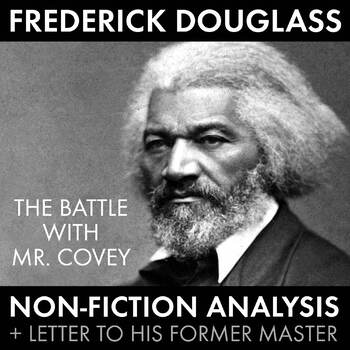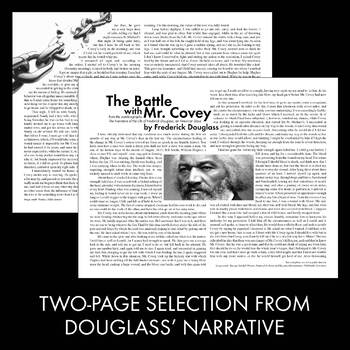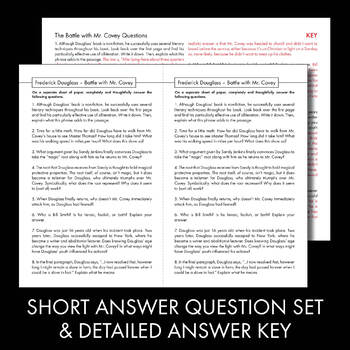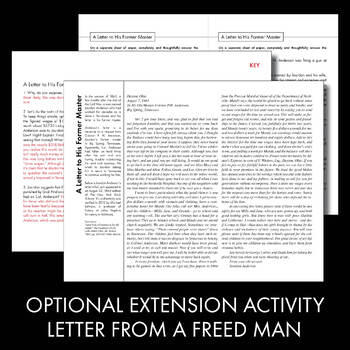Frederick Douglass, Non-Fiction Analysis to use for ANY Novel with Slavery Theme
- PDF
What educators are saying
Description
The Narrative of the Life of Frederick Douglass is a compelling autobiography and provides an honest view of the harshness of life for enslaved African-Americans in the 1800s. Use this 45-minute lesson that includes a slice of Douglass’ narrative to show your students the ugly reality of life in pre-Civil War America.
This package includes a two-page excerpt from Frederick Douglass’ book (in public domain) in which he details battling Mr. Covey, an abusive slave owner. After students read the passage, they complete an 8-question worksheet that requires them to dig back into the text, emphasizing analysis and interference of the material. Once you’ve discussed the answers as a class, then show your students a letter written in 1865 by a former enslaved man to his master. The letter is filled with candor, grace, and even a bit of dry humor. Another series of deep-thinking questions accompanies the assignment. You could split the two different texts and question sets into two separate lessons, but I like to compare-and-contrast the two men’s experiences and all of the material usually fits well into one class period.
These materials were designed to stand on their own and would work just as well for a history class as an English class. I, however, use these materials with my high school students’ study of The Adventures of Huckleberry Finn. I use this lesson the day after the class has read ch. 8 of the novel, when Huck discovers Jim hiding out on Jackson’s Island and Jim reveals his reasons for running away. By the end of the period, the class has a good understanding of the harsh conditions that Jim and the other enslaved people faced. As an additional homework assignment, I have my students write a letter from Jim to Miss Watson explaining his reasons for leaving.
I hope you like this lesson, which will keep your students busy with Common Core-aligned tasks.
Want more lesson materials to excite your students as they get to know Huck and Jim?
Click here to view my catalog of Huckleberry Finn lesson materials
Thanks for stopping by!
Cover image credit: George Kendall Warren, National Archives and Records Administration, WikiMedia Commons, Public domain





